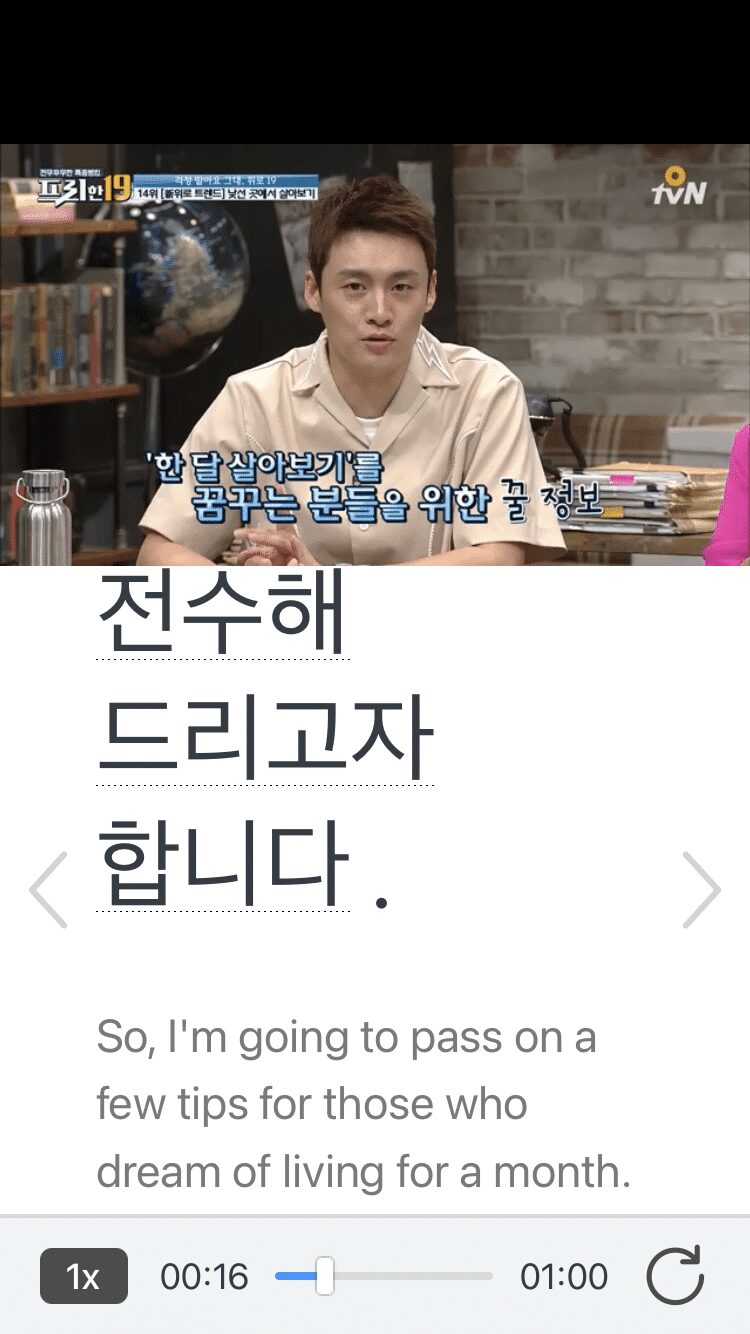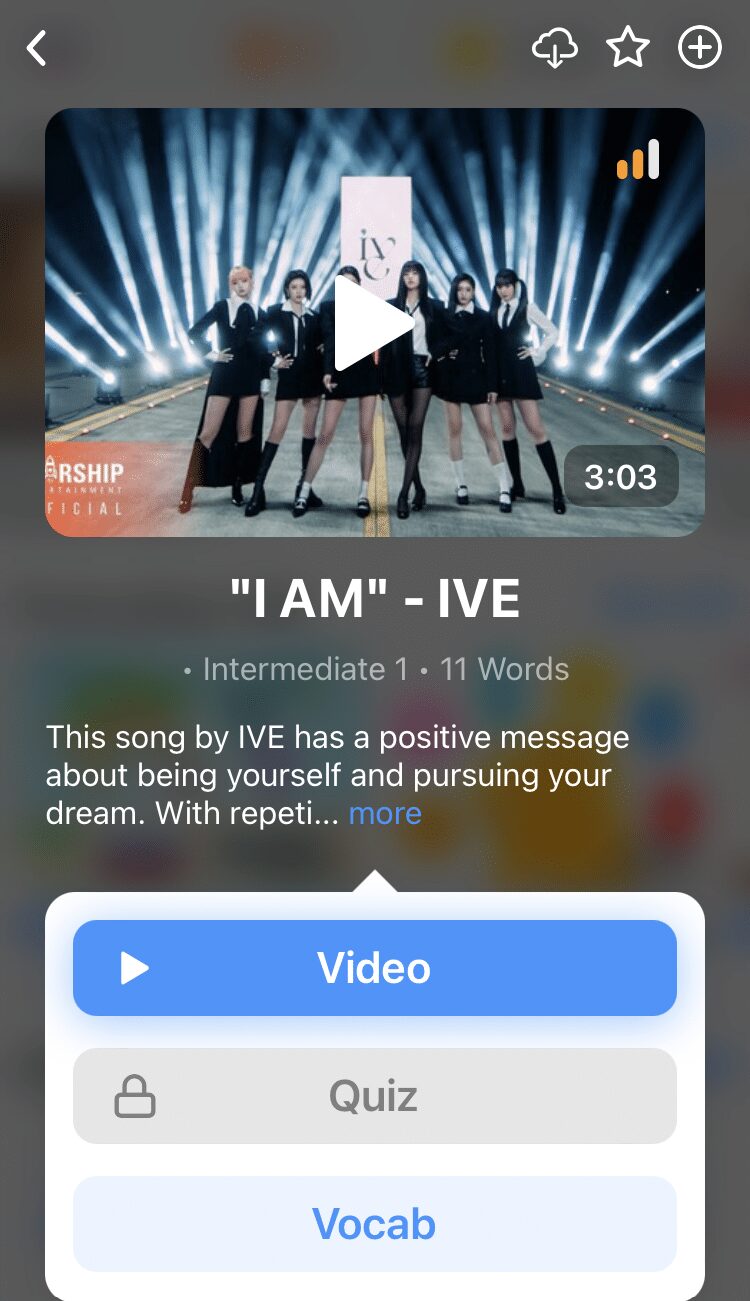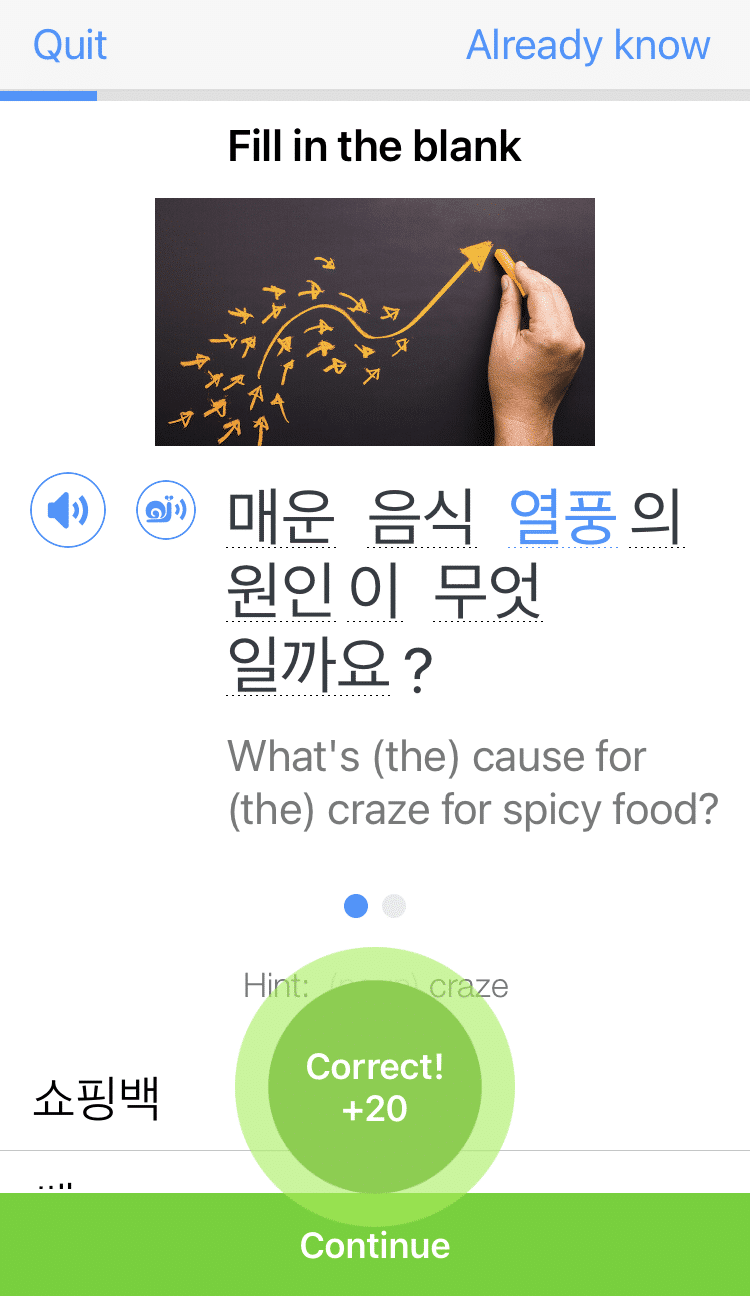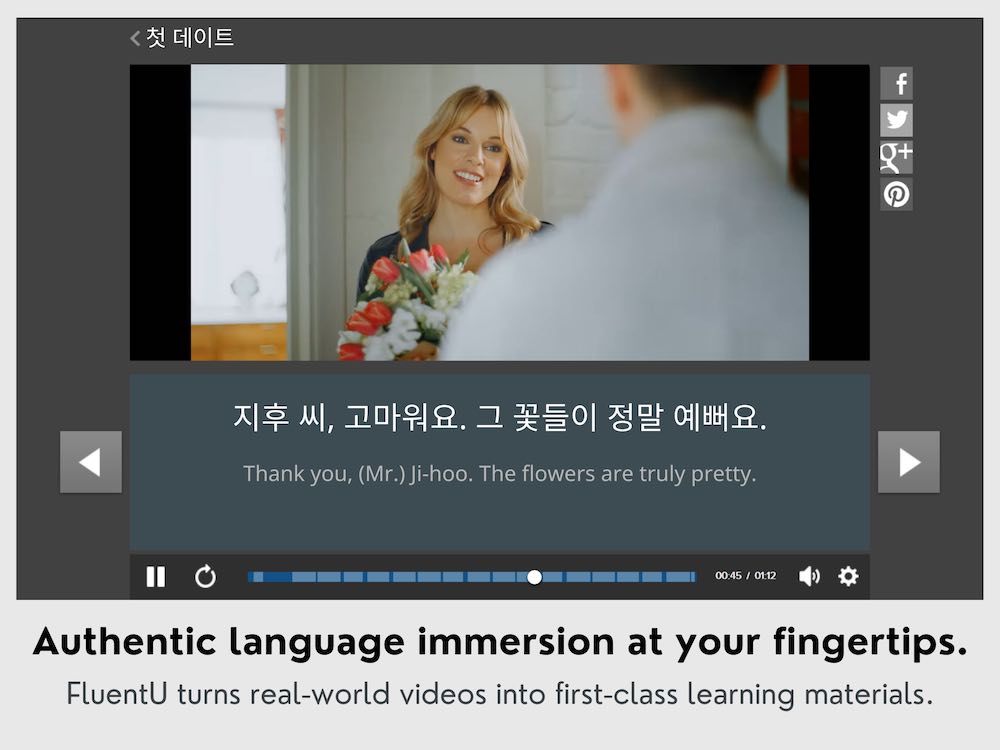9 Ways to Say You’re Welcome in Korean

Learning how to say “thank you” in Korean is only half the battle. Besides learning how to give thanks, you have to learn how to accept and respond to them as well.
Let’s go over some of the ways you can say “you’re welcome” in Korean. For each, I’ve included extra tips and info to help you figure out which expressions may work best in different contexts.
Download: This blog post is available as a convenient and portable PDF that you can take anywhere. Click here to get a copy. (Download)
Formal Ways to Say You’re Welcome in Korean
아닙니다 (ah-nip-ni-da) / 아니에요 (ah-ni-eh-yo)
English: It’s nothing, no problem
These two phrases almost literally translate to “it’s not” or “it’s nothing.” You can say them with a simple smile, to show that it was your pleasure to help someone out.
아닙니다 is appropriate for your seniors and those deserving respect. You can say 아니에요 for acquaintances and strangers. 아니야 (ah-ni-ya) is informal and appropriate for friends and family.
Actually, this is what you’ll probably hear more often in native conversations, as opposed to 천만에요 (see #3). And luckily, it’s easy to remember!
예 (yeh) / 네 (neh)
English: Yes
That’s right, you could also just respond to thanks with a simple “yes.” It’s similar to how in English we would say “Mhm” or “Sure thing” when we get thanked.
A simple “yes” can be the appropriate response when the request you carry out is very minor and hardly an inconvenience, such as opening a door for someone.
예 is very polite and formal. 네 is slightly less so. 어 (uh) and 응 (eung) are very informal.
Like the previously mentioned 아닙니다, the Korean “yes” response is more often used than the matter-of-fact “you’re welcome” Korean phrases. It’s so simple and short, that it may very well be your go-to reply for any thanks.
If you’re still afraid it sounds a little curt, you can stretch it out. For example, instead of a quick 예, draw it out like 예~~~. This drawl method is a common way in Korean to emphasize a word and the sentiment behind it.
Polite Ways to Say You’re Welcome in Korean
천만에요 (chun-man-eh-yo)
English: You’re welcome
Here’s a “you’re welcome” phrase you’ll probably find in Korean learner textbooks, though you may not actually hear it used often. That’s because it’s a bit dated, and Korean natives won’t usually respond to thanks with this phrase.
You can still use it though, to show that you appreciate the thanks, though I suggest you not use it too often. After all, if you want to practice your Korean conversational skills, you should learn some more common and natural-sounding ways to say “you’re welcome.”
별거 아니에요 (byul-guh ah-ni-eh-yo)
English: It’s nothing special
별거 means something of uniqueness or rarity. So with this phrase, you’re quite literally saying that what you did was nothing important.
Humility is always a nice virtue, and it’s especially appreciated in Korean culture. You can show some of your modesty with this phrase, to urge that whatever you’ve done was no deal at all.
To be formal, you can say 별거 아닙니다 (byul-guh ah-nip-ni-da). To be informal, you can say 별거 아니야 (byul-guh ah-ni-ya).
별말씀을요 (byul-mal-sseum-eul-yo)
English: It’s not worth mentioning
As lovely as this expression is in showing how humble you are, it may not be one that you’ll hear often in the wild.
But you can certainly use it when it seems appropriate–I’d say it can work best if someone is consistently extolling your graciousness or appears eager to tell someone else about your deed.
To be more formal, you can say 별 말씀을 다 하십니다 (byul mal-sseum-eul da ha-ship-ni-da).
괜찮아요 (gwaen-chan-ah-yo)
English: It’s alright
You’ve probably heard or used this phrase already as a way to say that yes, you are (physically and or mentally) okay.
However, it can also work as a polite “you’re welcome,” particularly if whoever’s thanking you is especially insistent on returning the favor somehow. Remember my warning about those pushy people, they’re everywhere!
To be more informal and casual, just drop the 요 and say 괜찮아 (gwaen-chan-ah).
뭘요 (mwol-yo)
English: For what
In English, we can exclaim “For what?” (with a bit of fake indignation) to suggest that one’s thanks was wholly unnecessary. The Korean counterpart, 뭘요, works similarly. Say it inquiringly and with some good-hearted chagrin.
Because of this, I recommend you use this phrase for scenarios in which it’s okay to be more casual and chummy with the individual.
With your friends, you can be even more informal and simply say 뭘. Drag out the word to really show you’re not going to put up with their fancy gratitude!
Informal Ways to Say You’re Welcome in Korean
필요가 없어서 (pil-yo-ga up-suh-suh)
English: There’s no need
This one works well when you really don’t think thanks is necessary, at all. It’s a nice and heartfelt-sounding expression that while relatively respectful isn’t so stuffy, so you can use it for good acquaintances, too.
By the way, you may encounter some Korean folks who are very pushy about repaying you for your kindness. Believe me when I say that a few grateful chaps can be really persistent to the point of intimidation. It’s a bit of a cultural thing that’s very pronounced in the act of gift-giving.
So accept their verbal thanks with grace, and once they start gloriously detailing how they can pay you back, stop them with a firm 필요가 없어서. To be more polite, you can say 필요가 없어서요 (pil-yo-ga up-suh-suh-yo), and to be formal, you can say 필요가 없어서입니다 (pil-yo-ga up-suh-suh-ip-ni-da).
고맙긴 (go-mahp-gin)
English: Not at all / No need to be thankful
The phrase is a contraction of 고맙기는. 기는 is often used to affirm the truth of the statement that precedes it, but it also suggests that the statement coming after it will serve to disagree with the prior one.
In this case, 고맙긴 essentially implies that you understand that someone is thankful, but you’re not necessarily in agreement with it. In other words, the “thank you” wasn’t needed.
You can say 고맙긴 by itself, but you can also add it alongside other phrases like 뭘 (고맙긴 뭘).
To make it more polite, you can say 고맙긴요 (go-mahp-gin-yo) or 감사하긴요 (gahm-sa-ha-gin-yo). The latter follows the same structure as the former, but it utilizes another way to say thank you in Korean, 감사합니다.
If you want to learn more about how to say “you’re welcome” in Korean, check out this video from the FluentU Korean YouTube channel:
How to Practice Saying “You’re Welcome” in Korean
Well, you yourself can create constant opportunities to practice saying “you’re welcome.” Simply be kind and gracious to Korean folks, and voila, you’ve got a chance to try out any one of the phrases on the list!
But if there aren’t any Korean speakers around, then check out resources that can show you realistic scenarios in which “thank you” and “you’re welcome” expressions would be used. One great example is video-based media, like movies, TV shows or even short Internet clips, all of which can be found on FluentU.
FluentU takes authentic videos—like music videos, movie trailers, news and inspiring talks—and turns them into personalized language learning lessons.
You can try FluentU for free for 2 weeks. Check out the website or download the iOS app or Android app.
P.S. Click here to take advantage of our current sale! (Expires at the end of this month.)
Remember to pay careful attention to the varying formality of the phrases. Saying the wrong one, even if your tone is polite, can lead to a response you wouldn’t want. Imagine the look on your boss’s face if you responded to his or her thank you with an airy 고맙긴!
With these phrases, you can warmly accept and validate a Korean person’s gratitude.
And remember, adding a little smile while you say “you’re welcome” can make your graciousness shine all the brighter!
Download: This blog post is available as a convenient and portable PDF that you can take anywhere. Click here to get a copy. (Download)
And One More Thing...
If you enjoyed this post, you're already halfway to having the time of your life learning Korean with FluentU!
FluentU makes it possible to learn with K-pop videos, funny commercials, entertaining web series and more. Just a quick look will give you an idea of the variety of FluentU videos on offer:

FluentU really takes the grunt work out of learning languages, leaving you with nothing but engaging, effective and efficient learning. It's already hand-picked the best videos for you (which are organized by level and topic), so all you have to do is simply choose any video that strikes your fancy to get started.
Each word in the interactive captions comes with a definition, audio, image, example sentences and more.

Access a complete interactive transcript of every video under the Dialogue tab, and easily review words and phrases from the video under Vocab.

You can use FluentU’s unique Quiz Mode to learn the vocabulary and phrases from the video through fun questions.

FluentU keeps track of what you're learning, and tells you exactly when it's time for review, giving you a 100% personalized experience.
Review sessions use video context to help embed the words in your memory.
Start using the FluentU website on your computer or tablet or, better yet, download the FluentU app from the iTunes or Google Play store. Click here to take advantage of our current sale! (Expires at the end of this month.)








